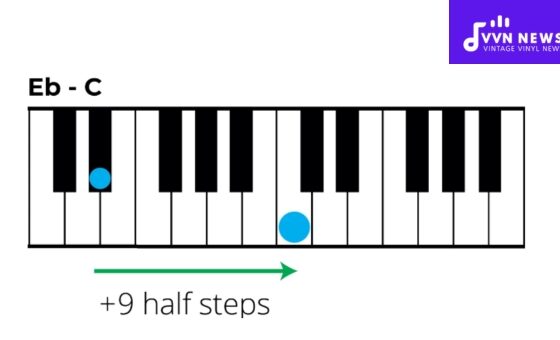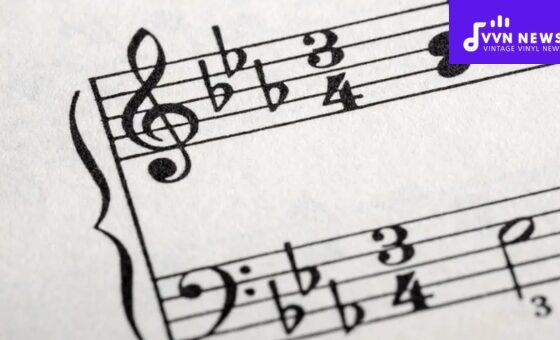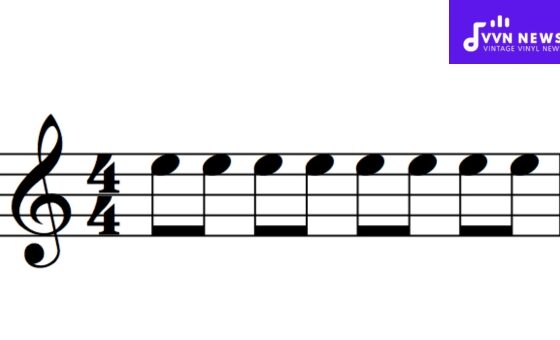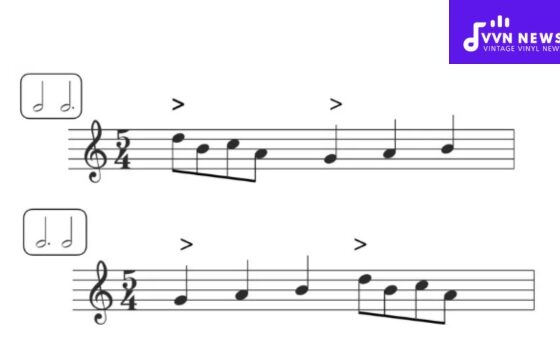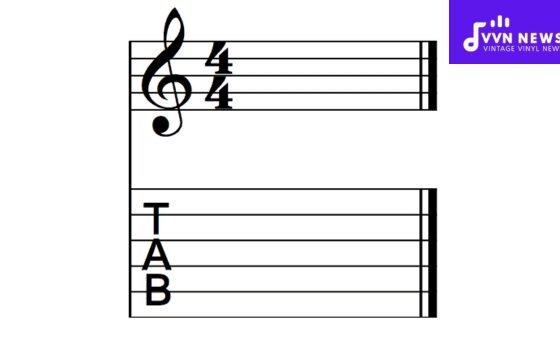The essence of a musical rhythm involves grasping the concept of time signatures. Today, we’re going to delve into the intricacies of one such time signature that’s rich in charm and character: time signature 3/2.
While it might seem confusing at first glance, I’m here to assure you that with a few explanations and examples, 3/2 will become as your favorite book.
Indulge me as we set off on this journey through the beautifully complex world of 3/2 time signature.
What is a 3/2 Time Signature?
In the realm of music, the 3/2 time signature predominantly signifies three beats per measure. The bottom digit ‘2’ translates to half notes. To put it into perspective, imagine a musical bar that’s divided into three equal parts, with each slice accommodating a half note.
This essentially allows for a richer, elongated feel when compared to its compact counterpart, the ubiquitous 4/4 time signature.
With this pulse of ‘three’, music in 3/2 introduces an inviting waltz-like rhythm that often captivates listeners and musicians alike with its flowing cadence and beguiling rhythm variations.
Also Read: Phrygian Mode [Adding Exotic Flair To Your Musical Compositions]
How to count in 3/2?
Before venturing into the process of counting in a 3/2 time signature, it’s crucial to know that this unique rhythmic configuration effectively harbors three half notes- or minims- per measure.
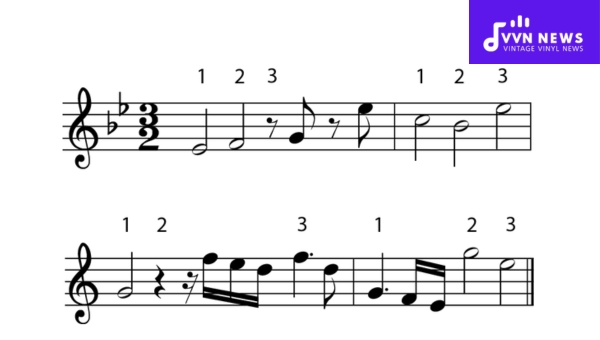
As you can see from this description, ‘3’ denotes the count of beats in each bar while ‘2’ signifies that the half note serves as the beat’s unit.
When counting 3/2, follow these steps:
- Note each Beat: Emphasize each half note. This means you would count “1-2-3,” with each number representing a half note.
- Keep steady Pace: When progressing through your piece, ensure your pace remains constant. This equates to consistently counting by a regular sequence: “1-2-3”, “1-2-3”, and so forth through your measure.
For visual learners, imagine your musical journey mapped out on an evenly-spaced grid; this verbal roadmap offers an accuracy against which you can align your rhythmical articulation.
The direct relationship between each beat and the corresponding count is vital to mastering the 3/2 time signature.
How 3/2 is a Simple, Triple Time Signature?
The world of music is complex and fascinating, yet with intricate chords and rhythms, there is an underlying structure that guides every composition.
Enter the realm of time signatures, notably the 3/2 time signature. A key feature of the 3/2 signature is its position as a Simple, Triple time signature.
This might sound perplexing at first glance. The term ‘simple’ in this context implies that each beat in this particular rhythm can be divided into two equal parts.
On the other hand, ‘triple’ indicates there are three primary beats per measure. To exemplify: In 3/2 time (often denoted as three-two), you invariably find that there are three beats per bar and each single beat gets a half-note (minim).
The number ‘3’ on top signifies three beats in each measure, while ‘2’ at the bottom corresponds to a half note receiving one beat. Mastering this unusual and somewhat elusive rhythm demands regular practice and careful listening.
Virtuoso or novice alike can conquer this unique rhythm with an open mind and an ear for detail.
Also Read: E Minor Pentatonic Scale [How To Use In Your Music Composition]
Songs with a 3/2 Time Signature
Deep in the realms of music composition, the 3/2 time signature offers a different rhythmical flavor compared to more common meters.
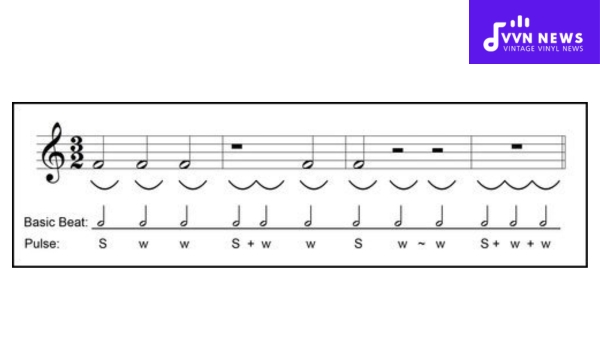
This meter, counted as three half-note beats per measure, creates a spacious and stately pulse.
Here are five songs where the 3/2 meter is showcased, each bringing its unique touch to this distinctive time signature.
“The Liberty Bell” by John Philip Sousa
Famous for its use as the Monty Python’s Flying Circus theme tune, Sousa’s march epitomizes the grandeur and officialdom often associated with a 3/2 beat.
Its trumpet fanfare and lively piccolo melodies sail atop the robust foundation provided by this meter.
“The Elephant” from Carnival of the Animals by Camille Saint-Saëns
In this classical piece, Saint-Saëns employs 3/2 time to emulate the lumbering gait of an elephant.
The balance between the long bass notes and accompanying piano creates a deliberately heavy dance that perfectly captures the animal’s essence.
“Matilda Mother” by Pink Floyd
From their debut album The Piper at the Gates of Dawn, Pink Floyd delves into psychedelic rock with this track.
Though known for their experimental edge, here they show how versatile they can be within traditional structures, utilizing 3/2 to give spatial expansiveness to their sound.
“Nostalgia” by Yanni
Acclaimed composer Yanni embraces 3/2 in this new-age track that weaves together both calmness and dramatic intensity.
It demonstrates how meter can be used to build anticipation before soaring into uplifting crescendos.
“Passacaglia and Fugue in C minor” by J.S. Bach
Bach’s use of 3/2 times in this organ piece underscores its solemnity and intricacy. The passacaglia theme—varied throughout—demonstrates Bach’s craftsmanship in using rhythmic constraints to achieve stunning complexity.
Each example showcases how composers across genres harness the power of 3/2 time signature—they leverage those three strong half-note pulses per bar for diverse expressive purposes, painting emotional landscapes ranging from whimsy to grandiloquence.
Also Read: Transposition Chart [A Lifesaver For All Musicians]
Distinguishing Between 3/2 and 3/4 Time Signatures
The numbers in a time signature carry significant meaning regarding musical pulse and rhythm.
At first, the signatures of 3/2 and 3/4 may appear similar, but they serve different purposes:
- Top Number: Both 3/2 and 3/4 have the same top number, which is “3.” This indicates that there are three beats per measure.
- Bottom Number: The essential difference arises with the bottom number. In 3/2 time, the “2” represents a half note (minim) as one beat. In contrast, the “4” in a 3/4 signature indicates that a quarter note (crotchet) receives one beat.
- Pulse Lengths: Consequently, each beat in 3/2 is longer since it’s associated with half notes. The pulse feels broader and more extended. Meanwhile, beats within a measure of 3/4 are defined by quarter notes resulting in quicker pulses.
- Musical Feel: The ambiance created by each time signature vastly differs due to their beat structures. Typically, marches employ a robust and straightforward march-like tempo denoted by the punchy rhythm of 3/4. Conversely, broader strokes usually found in classical music are gracefully framed within the grandeur of a spacious-sounding measure in 3/2.
- Tempo Adjustments: Often when exchanging these two signatures within compositions – adjustments to tempo are necessary to maintain rhythmic coherency between the patterns despite their commonalities.
By distinguishing these characteristics of both time signatures – music enthusiasts find clarity beyond simply reading sheet music but feeling its nuanced pulse coursing through an ensemble or solo piece.
Role of Ear Training and Meters In Time Signature 3/2
When we talk about ear training about more unusual time signatures like 3/2, we’re essentially discussing the ability to recognize and internalize rhythmic patterns.
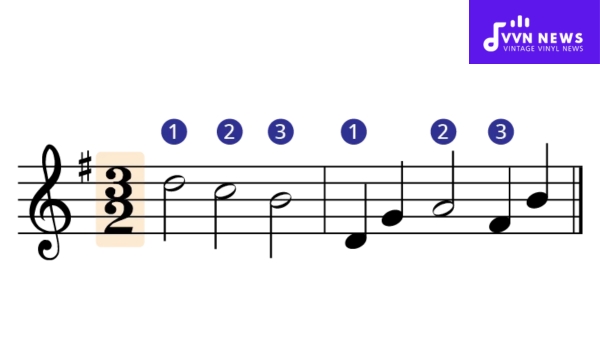
This skill is pivotal because it allows musicians to navigate the piece’s temporal landscape with precision.
Here are five key points that illustrate the influence of ear training and meter which are as follows:
Honing Your Rhythm Perception
Ear training is pivotal when it comes to internalizing different time signatures. For 3/2, sharpening your auditory skills allows you to discern the subtle but distinctive rhythmic patterns that make up its fabric.
As you immerse yourself in examples of this meter, you’ll begin to recognize the strong downbeat followed by two lighter beats, much like a waltz but with a slower and more grandiose feel.
Mastery Through Practice
It’s one thing to know what 3/2 time sounds like; it’s another to feel it instinctively. Consistent practice with a metronome can condition your internal clock to the spaciousness of this time signature.
Set your metronome to emphasize the first beat of each measure, letting the following two beats fall softly, which will engrave this pattern into your muscle memory.
Navigating Complex Rhythms
Complex pieces often employ multiple time signatures, including shifts into and out of 3/2 meter.
Developing an acute sense for these changes is crucial and comes from actively listening—and engaging with—diverse musical compositions that utilize such variance in the meter as part of their language.
The Role of Composition
For composers and arrangers, a solid knowledge of 3/2 allows them to weave together textures within their music that give off an air of elegance and controlled spaciousness.
By learning how this time signature feels and operates, you can create rhythms that breathe with freedom yet move with purpose.
Interplay Between Beats
3/2 extends beyond just knowing where the beat falls. It’s about perceiving how each note interacts within the measure’s canvas—a skill that greatly benefits from focused ear training sessions.
Once grasped, musicians can play with dynamics between beats effectively bringing out the unique triplet feel that gives 3/2 its signature flow.
Ear training serves as the bedrock for musicians looking to tackle various meters effectively, especially one as grand as 3/2.
It not only bolsters rhythmic accuracy but also enriches one’s appreciation for the artful structures within the music composition itself.
Also Read: How To Transpose Into The Tenor Clef? [Mastering In Notation]
FAQs
What exactly does “3/2” indicate in a time signature?
3/2 means there are three half-note (minim) beats per measure.
Can I recognize a 3/2 time signature by ear?
Yes, with practice you can identify the strong downbeat followed by two weaker beats.
Is the 3/2 time signature commonly used in modern music?
While it’s not as prevalent as 4/4, you can still find 3/2 in various classical pieces and some modern compositions.
Are there any popular songs written in 3/2 time?
Though rare, some folk and classical pieces use 3/2; it’s not typically found in mainstream pop music.
How does a musician keep time in a piece with a 3/2 rhythm?
Musicians count “1-2-3” with emphasis on the “1” to keep the proper pace for a piece written in 3/2 time.
Also Read: How To Transpose Treble To Bass Clef [Music Guide]
Conclusion
The 3/2 time signature enriches your musical repertoire, allowing you to feel the pulse of compositions that carry a more stately rhythm.
If you are reading music or simply enjoying the undulating pattern of such pieces, recognizing 3/2 times can open up a new dimension in your auditory experience.
Keep practicing, count aloud, and listen to examples—before long, this once foreign concept will become second nature. With each measure, you’re not just counting beats; you’re unlocking the symphony within the silence.




